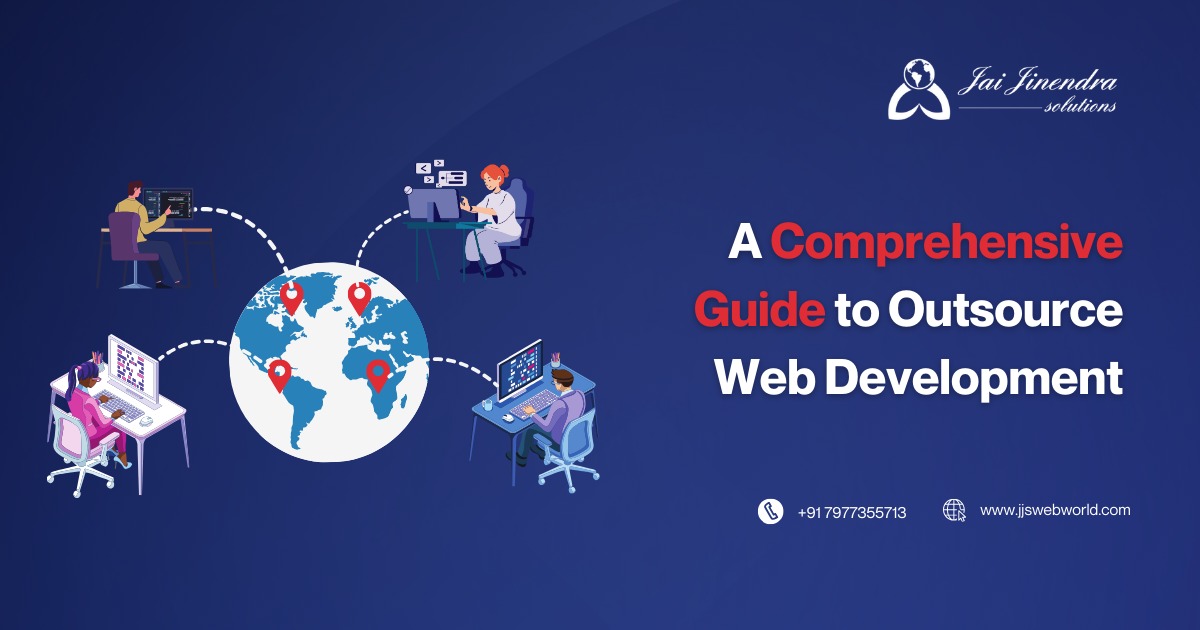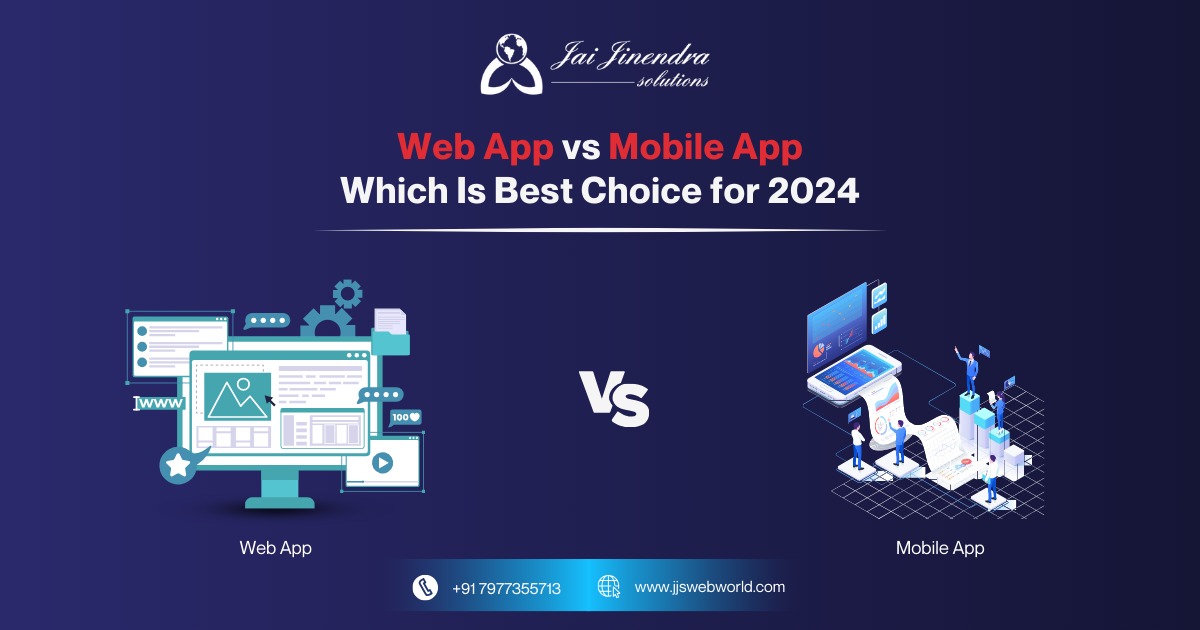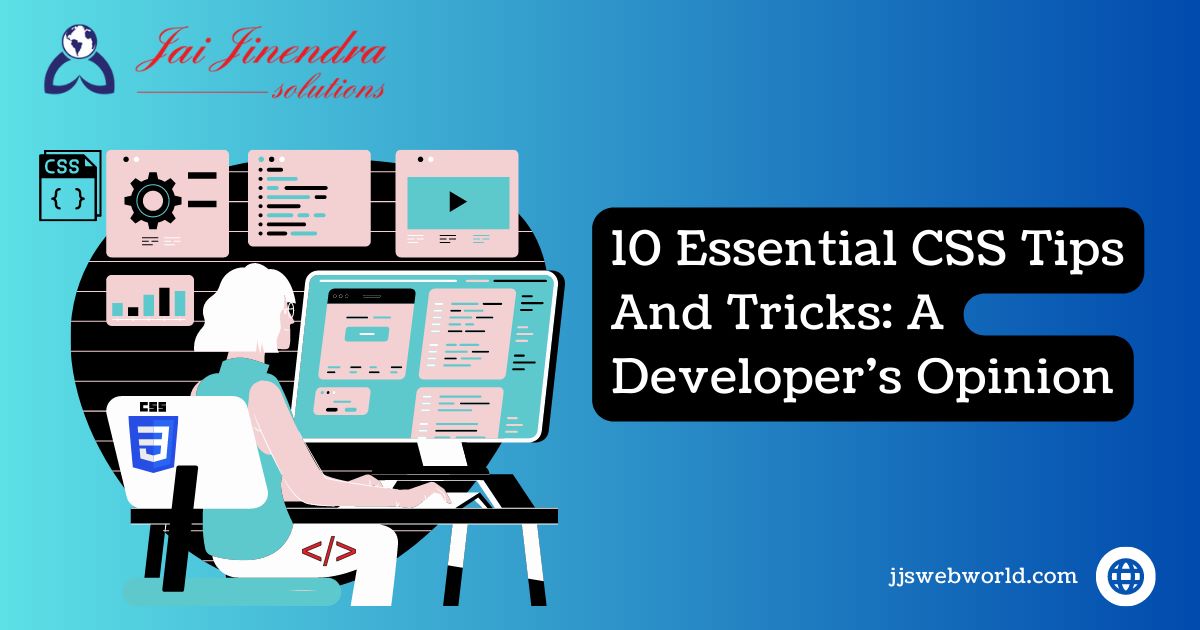- info@jjswebworld.com
- +91 7977355713
- 302, Arihant Residency Road No.2 Pushpa Park Dafftary Road , East Mumbai 400097, India
10 Essential CSS Tips And Tricks: A Developer's Opinion
Latest Posts
- 10 Aug 2023
- admin
Introduction
CSS, short for Cascading Style Sheets, is a fundamental technology used in website application development to control the presentation and layout of HTML documents. It serves as a style language that describes how HTML elements should be displayed on a webpage, defining visual aspects such as fonts, colors, margins, paddings, and positioning.
The primary purpose of CSS is to separate the content of a web page (HTML) from its presentation (styling). This separation allows web developers to apply consistent styles across multiple pages, ensuring a cohesive look and feel throughout a website. CSS operates using a cascading model, meaning that multiple style rules can be applied to the same HTML element, and the browser will determine the most specific and appropriate rule to use.
The cascading nature allows for easy maintenance and flexibility, as changes to one CSS rule can automatically propagate throughout the entire website.
With CSS, expert web developers can transform plain HTML documents into visually appealing and interactive web pages. It plays a pivotal role in delivering engaging user experiences, ensuring that website development solutions are both aesthetically pleasing and functionally efficient. CSS is an integral part of the web development process, empowering developers to create modern and dynamic web applications that cater to the diverse needs and preferences of users across the globe.
At JJS our web designers and developers have come up with 10 tips and tricks you need to know ASAP!
1. Master the Art of Responsive Design
Responsive design ensures that your website or website application development adapts seamlessly to various screen sizes and devices, including desktops, laptops, tablets, and smartphones. To achieve responsive layouts, use CSS media queries. These queries allow you to set specific CSS rules based on the screen width, height, orientation, and other device characteristics. Implement fluid grids, flexible images, and relative units like percentages to create layouts that automatically adjust to different screens, providing a consistent and user-friendly experience for all users.
2. Optimize Performance with CSS Sprites
CSS sprites are a technique to reduce the number of HTTP requests made by a web page. By combining multiple small images into a single sprite sheet, you can load all the images with just one request. This significantly improves page loading times, as the browser fetches one image instead of many. To use CSS sprites, define the background position of each individual image within the sprite sheet, and display only the part of the sprite that you need for each element.
3. Embrace Custom Fonts for Unique Web Design
Custom fonts allow you to break away from the standard web fonts, adding a unique touch to your website design solutions. Use the @font-face rule in CSS to embed custom fonts directly into your web pages. Make sure to choose fonts that are visually appealing, legible, and match the brand's personality. Custom fonts can greatly enhance the overall aesthetics and brand identity of your website.
4. Elevate Interactivity with CSS Animations
CSS animations bring life to your web pages and create captivating visual effects. With CSS keyframe animations, you can animate properties like opacity, color, position, and more over a specified duration. Add subtle animations to hover effects, buttons, and other elements to create engaging interactions. Remember to use animations wisely, ensuring they complement your web design and do not overwhelm the user experience.
5. Create Stunning Buttons with CSS Styling
Buttons are essential for guiding users to take action on your website or web application. Use CSS styling to design attractive buttons that align with your overall design language. Add hover and active states to provide visual feedback to users as they interact with the buttons. Consider using CSS gradients, box shadows, and border-radius to create eye-catching and modern button styles.
6. Utilize CSS Variables for Seamless Style Management
CSS variables, also known as custom properties, allow you to define reusable values that can be used throughout your CSS styles. They provide a more organized and modular approach to managing styles. Use CSS variables to store colors, font sizes, margins, and other common values, enabling easier maintenance and consistent styling across your entire website or web application.
7. Cross-Browser Compatibility for Wider Reach
Different web browsers may interpret CSS styles differently, leading to inconsistent rendering. To ensure cross-browser compatibility, regularly test your website on various browsers like Chrome, Firefox, Safari, and Edge. Address any rendering discrepancies and implement browser-specific CSS hacks or vendor prefixes when necessary. This ensures that users can access your web development solutions seamlessly, regardless of their browser preference.
8. Unleash the Power of CSS Grid for Complex Layouts
CSS Grid is a two-dimensional layout system that provides an intuitive and flexible way to structure your web page. It allows you to create complex, multi-column layouts with ease, reducing the need for additional HTML markup or float-based layout hacks. CSS Grid is ideal for designing responsive and dynamic web pages that adapt to different screen sizes, making it a must-have tool for modern web development.
9. Enhance the user experience with CSS Transitions
CSS transitions add smooth animations between property changes, creating a polished and interactive user experience. Use transitions to fade elements in and out, animate transformations like rotations or translations, and apply subtle effects to hover interactions. Keep the duration and timing functions of your transitions balanced to provide a natural and seamless transition between states.
10. Perfect Your Typography for Optimal Readability
Typography plays a critical role in conveying information effectively to users. Ensure optimal readability by choosing appropriate font styles, sizes, and spacing. Use relative units for font sizes to maintain consistency across devices. Pay attention to line height, letter spacing, and font weights to enhance readability. Well-crafted typography significantly enhances the user experience and keeps visitors engaged with your web application development service.
Conclusion
By incorporating these 10 essential CSS tips and tricks into your web development solutions, you can create visually stunning, responsive, and engaging websites and web applications that leave a lasting impression on users and stand out in today's competitive digital landscape. Mastering these techniques will elevate your CSS skills and set you apart as a proficient and creative web developer.






